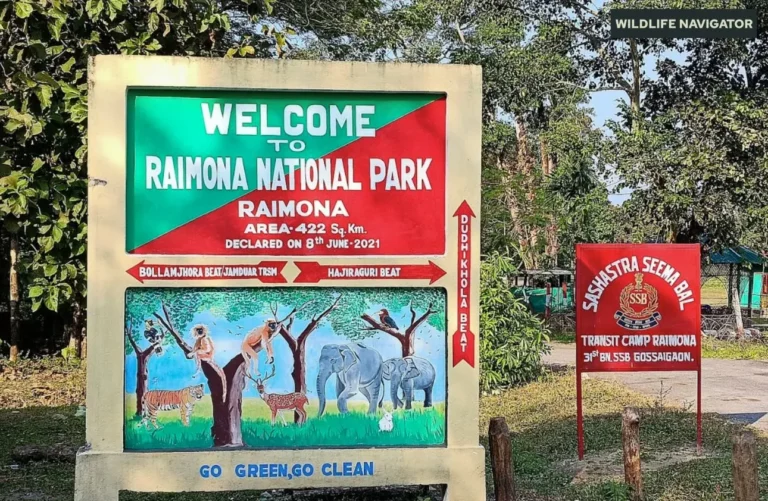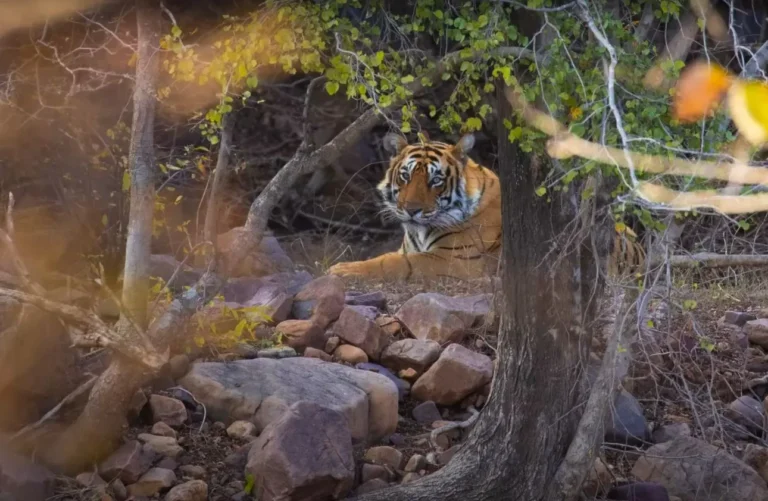Khangchendzonga National Park, Sikkim

Khangchendzonga National Park, also known as Kanchenjunga National Park (KNP), is one of India’s most breathtaking protected areas located in the northern region of Sikkim. The park holds both natural and cultural importance, earning it the status of a UNESCO World Heritage Site in 2016.
It derives its name from Mount Khangchendzonga (8,586 meters) — the world’s third-highest mountain, which dominates the park’s skyline. Covering an area of over 1,700 square kilometers, the park is home to a remarkable range of ecosystems, from subtropical forests to snow-covered peaks.
What makes Khangchendzonga truly special is its blend of rich biodiversity, sacred landscapes, and deep spiritual significance for the people of Sikkim. The park represents the perfect balance between nature and culture, making it one of the most extraordinary national parks in India.
Geography and Landscape
Khangchendzonga | Kanchenjunga National Park lies in the north and west districts of Sikkim, covering an area of about 1,784 square kilometers. The park’s terrain is dramatic, ranging from lush forested valleys to high-altitude glaciers and towering Himalayan peaks.
The altitude varies widely — from about 1,829 meters in the lower valleys to 8,586 meters at the summit of Mount Khangchendzonga, the highest point in India. This variation creates an incredible range of habitats and climatic zones, each supporting distinct plant and animal life.
The park includes several major glaciers, such as Zemu, Talung, and Rathong, which feed into the Teesta River, one of Sikkim’s most important waterways. Visitors can see deep valleys, rocky ridges, alpine meadows, and crystal-clear streams throughout the park.
Due to its high elevation and geographical range, the climate changes from subtropical at the base to arctic conditions at higher altitudes. This unique topography gives the park its exceptional beauty and ecological diversity.
History and UNESCO Recognition
Khangchendzonga National Park was established in 1977 by the Government of India to protect the rich biodiversity and fragile ecosystems of the Sikkim Himalayas. Over time, it became known not only for its natural beauty but also for its deep cultural and spiritual connections to the people of Sikkim.
In 2016, the park gained international recognition when it was declared a UNESCO World Heritage Site under the category of Mixed Heritage — one of the very few sites in the world recognized for both natural and cultural significance. This distinction highlights how the park’s landscapes are deeply intertwined with local traditions, myths, and spiritual beliefs.
For the indigenous Lepcha and Bhutia communities, Khangchendzonga is considered sacred. The mountain is believed to be the home of protective deities, and the surrounding valleys and caves feature in ancient folklore. These beliefs have played a vital role in preserving the park, as the land is treated with great respect and reverence.
The UNESCO listing emphasized not only its spectacular Himalayan scenery but also the unique co-existence of nature and culture — a rare harmony that continues to define the identity of Khangchendzonga National Park today.
Flora of Khangchendzonga National Park
The diverse altitudes and climatic zones of Khangchendzonga | Kanchenjunga National Park create a wide variety of vegetation types, ranging from tropical forests to alpine meadows. The park’s flora changes dramatically with elevation, supporting rare and endemic plant species that add to its ecological value.
Major Vegetation Zones
- Subtropical Broadleaf Forests (up to 2,000 m):
- Dominated by species like Castanopsis, Schima wallichii, and Alnus.
- Dense undergrowth with ferns, orchids, and mosses.
- Temperate Broadleaf and Mixed Forests (2,000–3,500 m):
- Common trees include Oak, Maple, Magnolia, Birch, and Alder.
- Rhododendron forests add color during spring.
- Subalpine and Alpine Zones (3,500–4,500 m):
- Characterized by Juniper, Silver Fir, Rhododendron, and Himalayan Larch.
- Open grassy slopes and meadows with wildflowers.
- High Alpine Meadows and Scrub (above 4,500 m):
- Sparse vegetation, with hardy species like Saxifraga, Potentilla, and alpine grasses.
- Many medicinal herbs and lichens grow in this region.
Notable Plant Highlights
- Over 500 species of orchids and 40 species of rhododendrons.
- Medicinal plants such as Nardostachys jatamansi (Spikenard) and Aconitum ferox.
- Rare endemic species adapted to the harsh Himalayan environment.
The variety of flora found in the park not only enhances its scenic charm but also provides vital habitat and food sources for its rich wildlife population.
Fauna of Khangchendzonga National Park
The wildlife diversity of Khangchendzonga | Kanchenjunga National Park is remarkable, owing to its vast range of altitudes and habitats. The park shelters many rare and endangered species, some of which are found only in the Eastern Himalayas. It plays a vital role in the conservation of high-altitude Himalayan fauna.
Major Mammals
- Snow Leopard – The elusive apex predator of the high Himalayas.
- Red Panda – The state animal of Sikkim, often seen in temperate forests.
- Himalayan Black Bear – Inhabits mid-altitude forest zones.
- Musk Deer – Known for its musk gland, found in alpine meadows.
- Himalayan Tahr – A wild goat species grazing on steep cliffs.
- Blue Sheep (Bharal) – Common prey of snow leopards.
- Goral and Serow – Mountain-dwelling herbivores.
- Langurs and Himalayan Palm Civet – Seen in lower forests.
Birds of Khangchendzonga
The park is a birdwatcher’s paradise, home to over 300 bird species, including several that are rare and endemic.
- Blood Pheasant (state bird of Sikkim)
- Himalayan Monal
- Satyr Tragopan
- Snow Pigeon
- Fire-tailed Sunbird
- Laughing Thrushes
- Tits, Flycatchers, and Woodpeckers
Migratory and high-altitude birds make the park an important site for avian biodiversity in the Eastern Himalayas.
Other Wildlife
- Reptiles: Himalayan pit viper, skinks, and lizards in lower zones.
- Amphibians: Tree frogs and toads thriving in moist valleys.
- Insects: Rare butterflies and moths, including high-altitude species.
The wide variety of fauna reflects the park’s ecological richness and underlines its importance as one of India’s most biologically diverse regions.
Culture and Spiritual Significance
Khangchendzonga National Park holds deep spiritual importance for the people of Sikkim. It is not only a natural wonder but also a sacred landscape woven into the myths, beliefs, and daily life of the region’s communities.
Cultural and Religious Importance
- Sacred Mountain:
- Mount Khangchendzonga is revered as the guardian deity of Sikkim.
- Local traditions describe it as a protector of the land and its people.
- Many rituals and festivals honor the mountain’s spiritual power.
- Lepcha and Bhutia Beliefs:
- The indigenous Lepcha community considers the park part of Mayel Lyang, the hidden paradise created by their ancestors.
- Bhutia Buddhists view the region as the dwelling place of spiritual entities and guardian spirits.
- Sacred Sites Within the Park:
- Tholung Monastery – A revered site holding ancient Buddhist manuscripts and relics.
- Sacred Caves – Believed to be meditation spots used by Buddhist saints.
- Holy Lakes and Glacial Valleys – Associated with local myths of purity and rebirth.
- Harmony Between Nature and Faith:
- The park’s sacred status has helped conserve its environment for centuries.
- Local communities treat forests, rivers, and mountains as living entities deserving respect.
The spiritual connection between people and nature makes Khangchendzonga National Park unique — a place where ecology and culture coexist in perfect balance.
Best Time to Visit
Visiting Khangchendzonga National Park (KNP) depends largely on the season, as the park experiences a wide range of climatic conditions due to its varying altitudes. Choosing the right time ensures clear views of the mountains, easier trekking, and better wildlife spotting.
Spring (March – May)
- Ideal for viewing rhododendron blooms and alpine flowers.
- Moderate temperatures make trekking comfortable in the lower and mid-altitude zones.
- Wildlife is active, and birds are more visible.
Autumn (September – November)
- Clear skies provide panoramic views of Khangchendzonga and surrounding peaks.
- Temperatures are pleasant, perfect for trekking and photography.
- Forests show vibrant foliage, adding color to valleys and meadows.
Winter (December – February)
- Cold and snowy conditions dominate higher altitudes.
- Best suited for experienced trekkers prepared for snow and icy trails.
- Lower zones remain accessible, but heavy snowfall can block some paths.
Monsoon (June – August)
- Heavy rainfall can trigger landslides and make trekking difficult.
- Many trails may be closed for safety.
- Dense fog and rain reduce visibility of mountains and wildlife.
Tip: For most travelers, spring and autumn are the optimal seasons to experience both scenic beauty and accessibility in the park.
How to Reach KNP
Khangchendzonga | Kanchenjunga National Park is located in northern Sikkim, and while remote, it is accessible via multiple modes of transportation. Planning ahead is essential due to the park’s high-altitude terrain and permit requirements.
By Air
- Nearest Airport: Pakyong Airport, about 60 km from Gangtok.
- Alternative Airport: Bagdogra Airport (West Bengal), approximately 150 km away.
- Flights from major Indian cities like Delhi, Kolkata, and Guwahati connect to these airports.
By Train
- Nearest Major Railway Station: New Jalpaiguri (NJP) in Siliguri, around 150 km from the park.
- NJP is well connected to major cities like Kolkata, Delhi, and Guwahati.
- From NJP, travelers usually hire taxis or take shared jeeps to reach Gangtok or Yuksom.
By Road
- Gangtok → Yuksom: The primary gateway to the park, around 115 km, takes 4–5 hours by car or taxi.
- Well-maintained roads connect Yuksom to trekking starting points like Dzongri and Goecha La.
- Local buses and shared taxis are available for short distances, but private vehicles are recommended for comfort.
Permits
- Foreign nationals require an Inner Line Permit to enter Sikkim and the park.
- Indian citizens may need permits depending on the trekking route.
- Permits can be obtained online or at designated government offices in Gangtok or Yuksom.
Access to the park combines air, rail, and road travel, followed by trekking to reach higher-altitude areas. Proper planning ensures a safe and enjoyable visit.
Trekking and Activities
Khangchendzonga | Kanchenjunga National Park is a paradise for trekkers, wildlife enthusiasts, and nature photographers. Its diverse landscapes, high-altitude trails, and pristine forests make it one of India’s most sought-after trekking destinations.
Popular Trekking Routes
- Yuksom – Dzongri – Goecha La Trek
- The most famous trek in the park.
- Duration: 10–12 days.
- Offers breathtaking views of Mount Khangchendzonga, alpine meadows, and rhododendron forests.
- Green Lake Trek
- Shorter but challenging.
- Leads to high-altitude glacial lakes with stunning mountain reflections.
- Suitable for experienced trekkers seeking less crowded paths.
- Dzongri Top and Thangshing Valley Trails
- Ideal for day treks and moderate hikes.
- Popular for photography and birdwatching.
Other Activities
- Birdwatching: Spot rare species such as Blood Pheasant, Satyr Tragopan, and Himalayan Monal.
- Nature Photography: Capture glaciers, alpine meadows, and diverse flora.
- Cultural Exploration: Visit monasteries and sacred sites along trekking routes.
Tips for Trekking
- Always hire local guides for high-altitude treks.
- Carry sufficient warm clothing, as temperatures drop sharply at higher altitudes.
- Maintain Leave No Trace ethics to protect fragile ecosystems.
- Trekking permits may be required for certain trails.
The park’s trekking routes are challenging but rewarding, offering unmatched Himalayan scenery, unique wildlife encounters, and cultural experiences that make every journey memorable.
Accommodation Options in KNP
Visitors to Khangchendzonga | Kanchenjunga National Park have a range of accommodation options, from basic forest rest houses to eco-lodges and homestays, depending on their preferences and trekking routes. Staying in local accommodations also provides an opportunity to experience Sikkimese culture firsthand.
Eco-lodges and Homestays
- Located in Yuksom and nearby villages.
- Offer basic to moderate facilities with local meals.
- Provide a chance to interact with Lepcha and Bhutia families.
- Environmentally conscious setups that support sustainable tourism.
Forest Rest Houses
- Maintained by the Sikkim Forest Department.
- Can be booked in advance for trekkers entering the park.
- Simple accommodations with dormitory-style or private rooms.
- Ideal for trekkers who want to stay closer to trailheads.
Guesthouses and Hotels in KNP
- Found in Gangtok or Pakyong, suitable as a base before heading into the park.
- Offer modern amenities like hot water, Wi-Fi, and comfortable beds.
- Good for families or travelers preferring urban conveniences before the trek.
Travel Tips for Accommodation
- Book well in advance, especially during spring and autumn seasons.
- Confirm facilities such as meals, heating, and trekking support.
- Choose accommodations that prioritize local employment and eco-tourism practices.
Staying in the park or nearby villages allows travelers to experience the natural beauty and cultural richness while minimizing their impact on the fragile ecosystem.
Conservation and Challenges
Khangchendzonga National Park is not only a natural and cultural treasure but also a fragile ecosystem facing several environmental and human-related challenges. Effective conservation efforts are essential to preserve its biodiversity and heritage.
Major Conservation Efforts
- UNESCO Protection
- The park’s Mixed Heritage status brings global attention and resources for sustainable management.
- Eco-Tourism Policies
- Trekking and camping are regulated to minimize environmental impact.
- Local guides and community-run accommodations promote responsible tourism.
- Wildlife Protection
- Endangered species such as snow leopards, red pandas, and musk deer are monitored.
- Anti-poaching measures and patrols ensure their safety.
- Community Involvement
- Indigenous communities participate in conservation initiatives, blending traditional knowledge with modern management.
- Sacred landscapes are preserved due to cultural respect.
Key Challenges in KNP
- Climate Change: Melting glaciers and unpredictable weather affect habitats and water sources.
- Tourism Pressure: Increasing trekking and trekking-related waste can damage fragile ecosystems.
- Human-Wildlife Conflict: Encroachment near villages may disturb wildlife.
- Infrastructure Development: Roads and construction projects risk habitat fragmentation.
Conservation in Khangchendzonga National Park (KNP) is a delicate balance between tourism, cultural preservation, and ecological protection, requiring continued global and local cooperation.
Travel Tips for Visitors
- Obtain Inner Line Permit if required.
- Respect cultural sites and sacred areas.
- Carry reusable items; avoid littering.
- Hire local guides for trekking.
- Be prepared for sudden weather changes.
Conclusion
Khangchendzonga National Park (KNP) is a unique blend of breathtaking Himalayan landscapes, rare wildlife, and sacred cultural heritage. From lush forests and alpine meadows to towering glaciers and revered monasteries, the park offers an unforgettable experience for nature lovers, trekkers, and cultural explorers.
Its status as a UNESCO World Heritage Site highlights the importance of preserving both its ecological diversity and spiritual significance. Visiting the park is not just a journey through majestic scenery, but also an opportunity to witness the harmony between nature and human culture that has endured for centuries.





